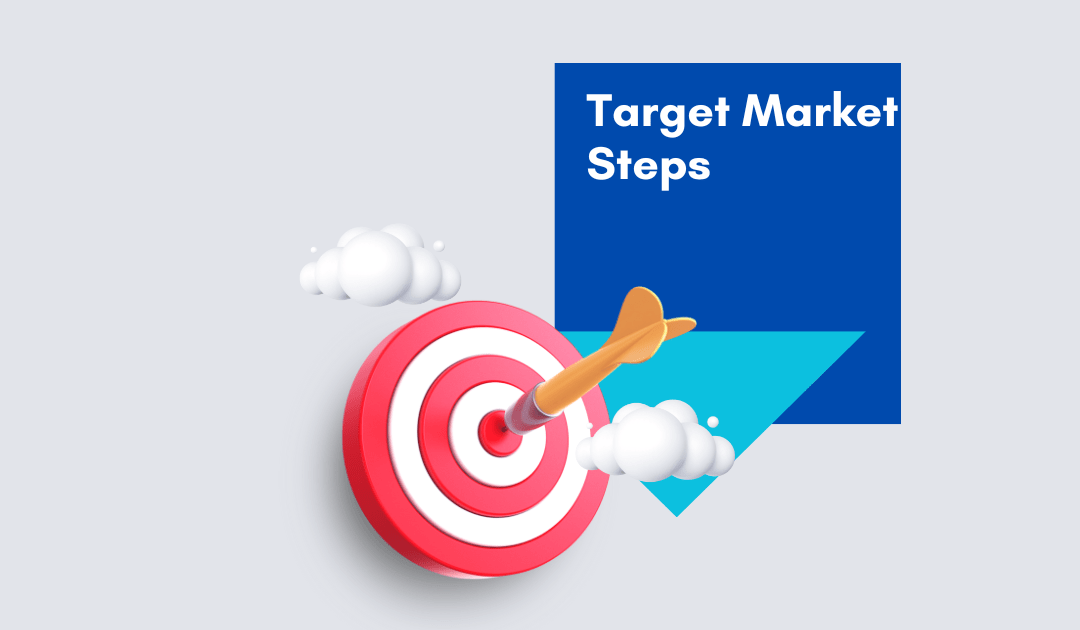In this article, we unravel the art of defining your target market and cultivating community involvement, two pivotal threads that, when woven together, create a tapestry of prosperity.
Dive in with us as we uncover the secrets of effective customer profiling, community segmentation, and the magic of local demographics. Learn how assessing your community’s values and interests can make your services stand out.
Discover the power of partnerships and sponsorships, and the transformative impact of charity initiatives. And, don’t forget to gather insights through feedback and surveys. Together, these threads form a roadmap that leads your laundry business to success.

So, grab your detergent and a sense of purpose, because we’re about to embark on a journey that will not only make your laundry pristine but also your business profitable.
Welcome to the world of laundry, where community and commerce come together in a wash of success!
Boost Your Laundry Business with AI, ChatGPT Proven Strategies!
Unlock the Secrets of ChatGPT Prompts, Fast-Track Your Laundry Business Success with the Mastermind Mr. RKrishna
Customer Profiling
In the laundry business, your success begins with a deep understanding of your customers. You need to know them like the fresh laundry scent you provide. Customer profiling is the art of creating detailed profiles of your ideal customers, considering various factors such as age, gender, income, and lifestyle.
Why Customer Profiling Matters:
- Tailored Services: By profiling your customers, you can tailor your services to their specific needs. For example, if you discover that a significant portion of your customer base includes busy professionals, you can offer premium express services to cater to their fast-paced lifestyles.
- Effective Marketing: Profiling helps you craft marketing campaigns that resonate with your target audience. You’ll know where and how to reach them, whether it’s through social media, local newspapers, or community events.
- Customer Retention: Understanding your customers’ preferences allows you to build loyalty. You can offer personalized discounts, promotions, or loyalty programs that keep them coming back.
How to Create Customer Profiles:
- Data Collection: Gather data on your existing customers and analyze it. Look for common characteristics and preferences.
- Market Research: Use market research tools to gather information about your local demographics and competitors.
- Surveys and Feedback: Conduct surveys and seek feedback from your customers to get insights into their expectations and experiences.
- Constant Update: Keep your customer profiles up to date. Customer preferences can change, and your services should adapt accordingly.
Example: Imagine you operate a laundry service in a neighborhood predominantly populated by young families. By profiling your customers, you might discover that convenience and affordability are their top priorities. You can then focus on promoting your delivery services and offering family-friendly pricing packages.
Creating customer profiles is not just about laundry; it’s about connecting with your community on a personal level, ensuring your services meet their needs and making your laundry business an indispensable part of their lives.
Segmentation
In the laundry business, treating all your customers the same way is like using a one-size-fits-all detergent for all types of fabrics – it’s not the best approach. Segmentation is the strategy of dividing your customer base into segments based on common characteristics, and it’s a key element in your path to success.
Why Customer Segmentation Matters:
- Personalization: Segmentation allows you to personalize your services. For instance, you can offer different pricing packages, delivery options, or loyalty programs to different customer segments.
- Targeted Marketing: Instead of casting a wide net with your marketing efforts, segmentation lets you aim for the bullseye. You’ll be able to tailor your marketing campaigns to the specific preferences and behaviors of each segment.
- Efficient Resource Allocation: By knowing which customer segments are the most profitable, you can allocate your resources more efficiently, whether it’s in terms of staff, marketing budget, or inventory.
How to Implement Customer Segmentation:
- Identify Common Characteristics: Look for patterns in your customer data, such as age groups, spending habits, or service preferences.
- Create Customer Personas: Develop personas for each segment. For instance, you might have a “Busy Professionals” persona and a “Families with Kids” persona.
- Tailored Strategies: Develop strategies and services that cater to the unique needs of each segment. This might include targeted advertising, special offers, or service enhancements.
Example: Suppose your laundry business serves a diverse community, including college students, retirees, and working professionals. By segmenting your customers, you can offer a discount package to students, a seniors’ special for retirees, and a convenient pickup and delivery service for professionals.
Customer segmentation enables you to maximize your laundry business’s potential by addressing the specific requirements of various customer groups.
It’s like offering custom stain removal solutions for different fabric types – a smart approach to keep your customers satisfied.

Local Demographics
To truly succeed in the laundry business, you need to know your local community inside and out. Local demographics play a pivotal role in understanding the specific needs and preferences of potential customers.
Why Understanding Local Demographics Matters:
- Tailored Services: Local demographics help you tailor your services to your community’s unique requirements. For instance, if your area has a significant population of families, you might offer services like family-sized laundry bundles or children’s clothing care.
- Pricing Strategies: Different demographics may have varying price sensitivity. Understanding this allows you to set competitive pricing that appeals to your local customer base.
- Timing and Operations: Knowing the daily routines of your community can help you adjust your operational hours for maximum convenience.
How to Analyze Local Demographics:
- Census Data: Start with publicly available census data to gain insights into the age, income, and family composition of your community.
- Market Research: Conduct additional market research to understand local shopping behaviors and preferences.
- Competitor Analysis: Learn from your competitors. What services or promotions are working for them in your specific area?
Example: Let’s say you operate your laundry business in a neighborhood with a growing population of young professionals. Knowing this, you might offer extended evening hours, an express service for those in a hurry, and a loyalty program that rewards frequent users.
Understanding your local demographics is like selecting the right washing cycle – it ensures your services are perfectly aligned with your community’s needs, making your laundry business a go-to destination for all their laundry solutions.
Download Your Free
Digital Marketing Plan Template
Build a practical, strategic marketing plan that generates more web traffic, leads and Conversions. Reach Your Target Audience Where They Are and Drive Sales Like Never Before
Boost Your Laundry Online Presence with Proven SEO, Digital Strategies!
Unlock the Secrets of Google SGE Techniques, Fast-Track Your Laundry and Dry Cleaning Business Success. Get Free SEO Audit on Your website
Partnerships:
In the laundry business, partnerships are not just about sharing lint traps; they’re about joining forces with local businesses to leverage each other’s customer bases and enhance community involvement.
Why Forming Partnerships Matters:
- Extended Reach: Partnering with local businesses allows you to tap into their customer networks. For example, collaborating with a nearby dry cleaner or a local gym can cross-promote services.
- Community Engagement: Joint promotions or events with partners can boost community involvement and brand visibility. Community members appreciate businesses that work together for their benefit.
- Shared Resources: Partnerships can lead to cost-sharing opportunities, such as co-sponsoring events, which can be more cost-effective.
How to Form Beneficial Partnerships:
- Identify Complementary Businesses: Look for businesses in your area that complement your services. For a laundry business, this might include dry cleaners, clothing boutiques, or fitness centers.
- Engage in Conversations: Reach out to potential partners and discuss how you can collaborate. Find common goals and shared interests.
- Promotions and Events: Plan joint promotions or events that benefit both your businesses and the community. This can include co-hosted workshops, discounts for shared customers, or community cleanup initiatives.
Example: If your laundry business is located near a local gym, you could partner to offer discounted laundry services to gym members, promoting health and cleanliness in the community. Such partnerships can be mutually beneficial and foster community involvement.
Building partnerships is like using a fabric softener that not only makes clothes soft but also keeps your business relationships smooth and beneficial.

Sponsorship:
Sponsoring or participating in local events, sports teams, or charitable activities can significantly contribute to increasing brand visibility and goodwill for your laundry business.
Why Sponsorship Matters:
- Brand Exposure: Sponsoring local events or teams puts your business in the spotlight. It increases your brand’s recognition in the community.
- Community Bond: Supporting local initiatives fosters a sense of community involvement and goodwill. It shows that your business cares about more than just profits.
- Marketing Opportunities: Sponsorship often comes with marketing opportunities. Your business name and logo can be prominently displayed at events, and you can use this for further advertising.
How to Approach Sponsorship:
- Local Events: Identify local events, such as festivals, sports tournaments, or charity runs, that align with your brand’s values and mission.
- Participation: Consider not only monetary sponsorship but also active participation. Engage with the community during events or initiatives you sponsor.
- Measurable Impact: Evaluate the impact of your sponsorship efforts. This can include tracking brand mentions, increased foot traffic, or engagement with community members.
Example: Suppose your laundry business sponsors a local charity run. In addition to providing funds for the event, you offer free laundry services to volunteers. This showcases your commitment to the community, and participants may become loyal customers.
Sponsorship is like adding a fresh scent booster to your laundry business – it leaves a positive and lasting impression, enhancing your brand image and community ties.
Charity Initiatives:
Hosting charity fundraisers or volunteer events isn’t just about washing clothes; it’s about giving back to your community and fostering a positive brand image.
Why Charity Initiatives Matter:
- Community Impact: Charity initiatives are a way to make a meaningful impact in your community. By addressing local concerns and supporting causes, you become an active and responsible member of the community.
- Brand Reputation: Hosting charity events builds a positive brand reputation. It shows that your business is socially responsible and genuinely cares about community well-being.
- Community Bonding: Charity initiatives create opportunities for your team and your customers to come together, reinforcing the sense of community and strengthening customer loyalty.
How to Implement Charity Initiatives:
- Identify Local Needs: Engage with your community to understand its needs. Identify areas where your business can make a difference.
- Partnerships: Collaborate with local non-profits or organizations to maximize your impact and reach.
- Transparency: Clearly communicate your charity initiatives to your customers and community members, sharing the progress and results.
Example: Suppose your laundry business hosts a clothing drive for the local homeless shelter. Customers can drop off gently used clothing along with their laundry. You not only provide clean clothes for those in need but also create a sense of giving within your community.
Charity initiatives are like a fabric stain remover for your brand’s image – they help you wipe away any doubts about your commitment to the community and make your business shine.
Download Free
Google Ads PPC Strategies Tailored for Laundry Industry
Whether you are starting to research Google Ads (Pay-per-Click) or are ready to set up your first campaign, use these workable and proven strategies to get started. Scale up your lead generation efforts and achieve unparalleled results. Reach Idea Customers, Convert Clicks into Customers – Let's Optimize Google Ads Campaign Today!
Feedback and Surveys:
In the laundry business, your customers’ voices are more valuable than the lint in your filters. Seeking feedback from customers and community members is essential to continuously refine your services and better meet their needs.
Why Feedback and Surveys Matter:
- Customer-Centric Improvements: Feedback helps you understand your customers’ experiences and concerns. You can make improvements based on their suggestions.
- Quality Assurance: Continuous feedback and surveys ensure the quality of your services. You can identify and rectify any issues promptly.
- Customer Engagement: Actively seeking feedback engages your customers and shows that you value their opinions, strengthening customer loyalty.
How to Gather Feedback and Conduct Surveys:
- Online Surveys: Use online survey tools to collect feedback from customers. Ask about their experiences, satisfaction levels, and suggestions for improvement.
- In-Person Feedback: Encourage in-person feedback through comment cards or by engaging customers in conversation at your laundry business.
- Regular Reviews: Monitor online reviews and ratings on platforms like Google, Yelp, or social media to gauge customer sentiments.
Example: Your laundry business periodically conducts surveys asking customers about their experiences and preferences. One of the common suggestions is to offer a mobile app for easy scheduling and tracking of orders. Responding to this feedback, you develop an app that enhances convenience and improves customer satisfaction.
Gathering feedback is like using a fabric softener for your business – it makes the customer experience smoother, softer, and more satisfying, leading to increased customer loyalty and growth.
Final Words:
As we wrap up this journey through the world of laundry business success, it’s clear that understanding your community and reaching your target market are the cornerstones of a thriving laundry enterprise.
By profiling your customers, you create a vivid picture of your ideal clientele, ensuring that your services cater precisely to their needs. Segmentation empowers you to offer personalized experiences and marketing efforts, making your laundry business more appealing and efficient.
Local demographics shed light on the uniqueness of your community, enabling you to serve them better. Community assessment connects you to the pulse of local life, reinforcing your presence as a valuable community asset.
Partnerships and sponsorships open doors to new horizons, broadening your customer base and your brand’s reach.
But the journey doesn’t end there. By engaging in charity initiatives, you contribute to your community’s well-being and create a positive brand image.
Seeking feedback and conducting surveys keeps your finger on the pulse of customer needs, ensuring your services remain exceptional.
As you implement these strategies and weave them into the fabric of your laundry business, you’re not just providing clean clothes; you’re nurturing the bonds of your community.
You’re becoming an indispensable part of their lives, and in return, you’re building a strong and resilient business.
In the laundry business, success isn’t just about wash and fold; it’s about listening, adapting, and serving with heart. We hope this article has illuminated the path to your laundry business success and wish you fresh, clean, and prosperous days ahead.
Thank you for joining us on this journey, and may your laundry business thrive!
Promote Your Laundry Business Online with Proven Online Marketing Strategies!
Unlock the Secrets of Google Ranking Optimization Strategies , Fast-Track Your Laundry Business Success with Mastermind Mr. RKrishna
Related Articles
Google Ads PPC Advertising Strategies That Entice Your Customer to Take Action
Are you struggling to make your laundry service stand out online? With Google Ads PPC campaigns, you can reach your target audience and drive action...
The Blueprint for Laundry Business Success: Creating Your Ideal Customer Profile
Turning Your ICP into Profit: Actionable Steps for Laundry Business Success In the world of laundry and dry cleaning services, success hinges on...
Top Rated List of LG Commercial Fully Automatic Front Load Washer Dryers
Are you dreaming of a successful laundry business venture that catapults you into the ranks of top entrepreneurs worldwide? Look no further than LG's...
USA Coin-operated Commercial Laundry Market Size & Trends Analysis Report 2023-30
The "U.S. Coin-operated Commercial Laundry Market Size, Share & Trends Analysis Report By Equipment (Top-load, Front-load), By Product (Washer,...
Effective Google Ads PPC Campaign Management Strategies for Laundry Business Growth
Struggling to give your laundry business the boost it deserves? Let's talk about Google Ads PPC Campaigns! It's not just about clicks and ads; it's...
Understanding Cross-Selling | Upselling in Laundry Services Business
Upselling and Cross Selling Strategies for Laundry Business: In today’s fast-paced world, convenience is king. As someone who’s been immersed in the...

